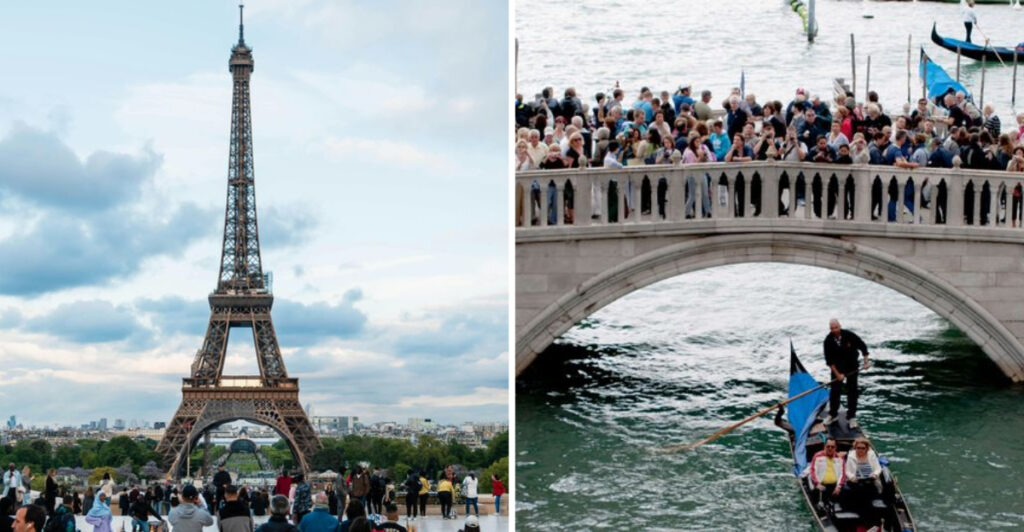Europe, renowned for its cultural heritage and stunning landscapes, faces a growing challenge: overtourism. While the influx of travelers boosts local economies, it also brings crowds that strain resources and diminish the charm these destinations are famous for. This article highlights ten of the most overvisited spots in Europe, offering insights into their unique allure, the impact of tourism, and the delicate balance required to preserve their essence for future generations.
1. Venice, Italy
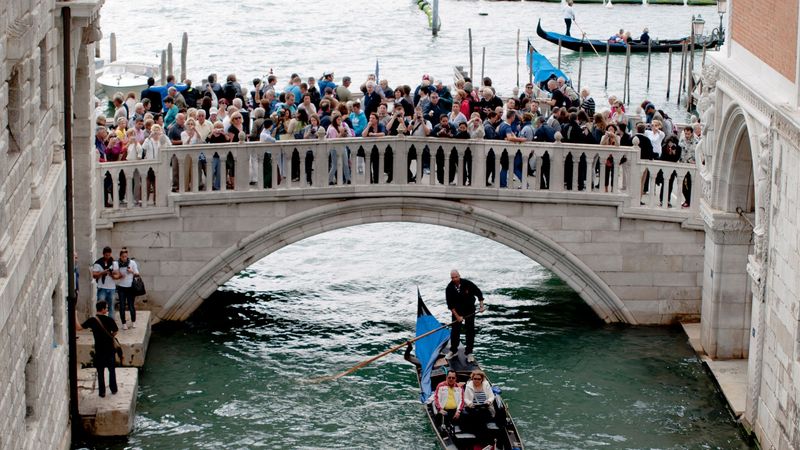
Floating on its intricate network of canals, Venice is a marvel of human engineering and artistry. However, the daily influx of tourists is overwhelming the city’s delicate infrastructure.
As gondolas sway in the crowded waters, locals find themselves squeezed out, contributing to a dwindling population. The charm of wandering through its narrow alleys becomes less enchanting when shared with throngs of eager visitors.
Efforts to manage the crowds, such as entrance fees and regulated visitor numbers, are being considered. Venice’s struggle is a poignant reminder of the fine line between tourism and preservation.
2. Barcelona, Spain
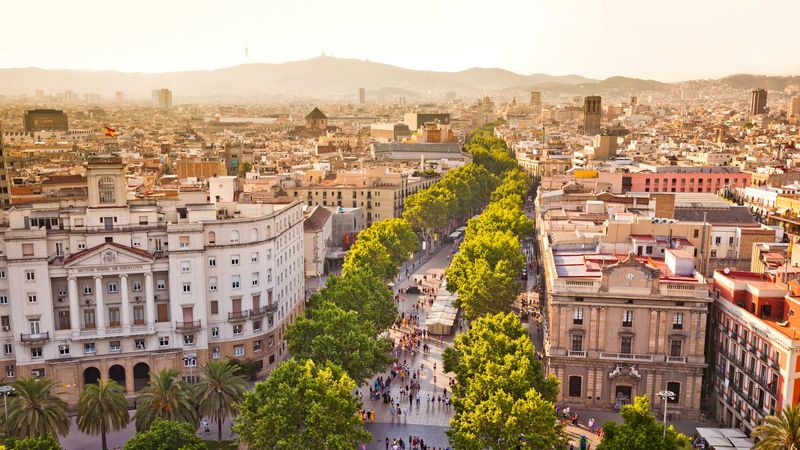
Barcelona, a city imbued with Gaudí’s genius, draws millions to its streets every year. La Rambla, once a serene promenade, now throngs with tourists snapping selfies and seeking souvenirs.
This bustling activity has caused friction between visitors and residents, who yearn for their city to regain its former pace. Amidst the cacophony, the vibrant culture that defines Barcelona risks being overshadowed.
Local authorities are implementing strategies to distribute tourists more evenly across the city, ensuring that its beauty endures for residents and visitors alike.
3. Santorini, Greece
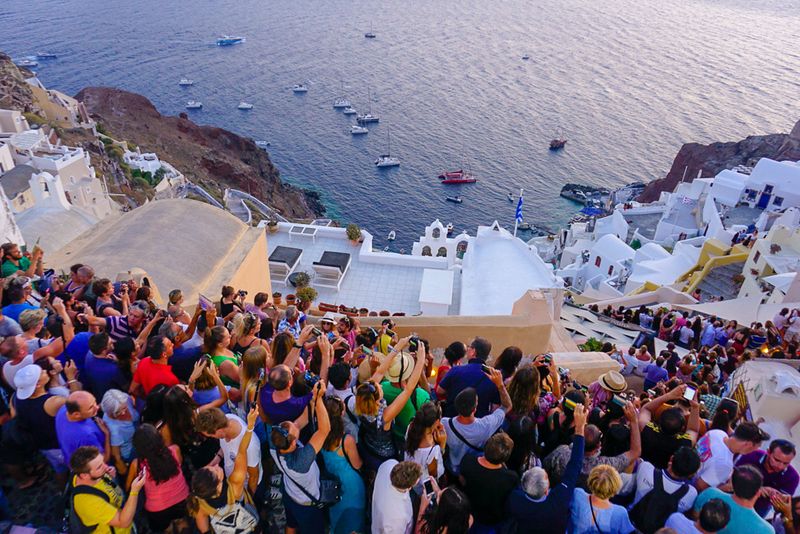
Santorini’s breathtaking vistas and iconic sunsets make it a dream destination for many. But during peak season, the island becomes a sea of selfie sticks and bustling crowds.
The narrow streets of Oia can barely accommodate the throngs eager to capture its beauty. This influx puts immense pressure on local resources, from water supply to waste management.
To protect its natural beauty, authorities are exploring measures like visitor caps and off-peak promotions, ensuring Santorini remains a paradise for generations.
4. Amsterdam, Netherlands
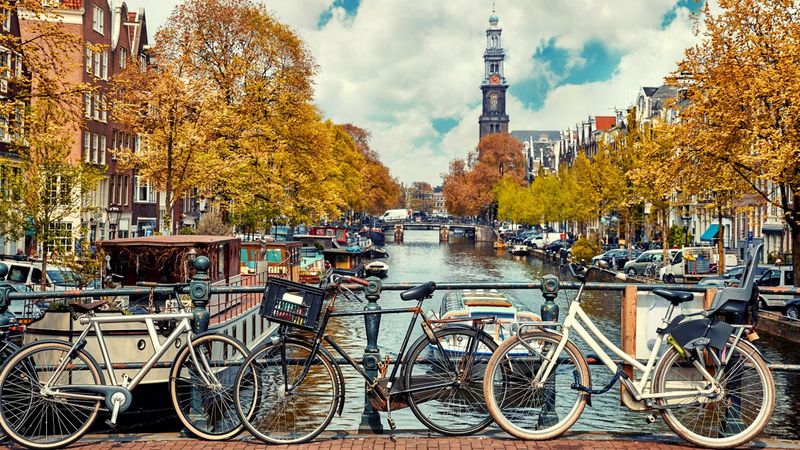
Amsterdam’s charm lies in its canals and vibrant culture, attracting millions of visitors annually. Yet, the surge in tourism has altered the city’s landscape.
Bikes weave through crowds on narrow streets, while residents find themselves amidst an endless stream of visitors. This influx challenges daily life, sparking debates on managing tourism sustainably.
Initiatives like promoting lesser-known districts are underway, aiming to balance tourism with quality of life for locals. Amsterdam’s efforts highlight the importance of thoughtful tourism management.
5. Dubrovnik, Croatia

Dubrovnik, with its ancient walls and stunning coastline, captivates all who visit. However, its fame, amplified by popular media, has led to overwhelming tourist numbers.
Stradun, the city’s main street, often feels more like a parade ground than a historical thoroughfare. This congestion threatens the very essence of Dubrovnik’s heritage.
To combat overcrowding, the city is implementing visitor limits and promoting sustainable travel experiences, ensuring its history is not lost in the crowd.
6. Paris, France

Paris, with its timeless allure, remains a top destination for travelers worldwide. The Eiffel Tower, a symbol of romance and elegance, is surrounded daily by eager tourists.
This popularity, while a testament to the city’s charm, creates challenges in preserving its iconic landmarks. The bustling crowds at museums and historical sites sometimes detract from the experience.
Efforts to manage these numbers include timed entries and encouraging visits to lesser-known attractions. Paris continues to find ways to welcome visitors without compromising its magic.
7. Rome, Italy
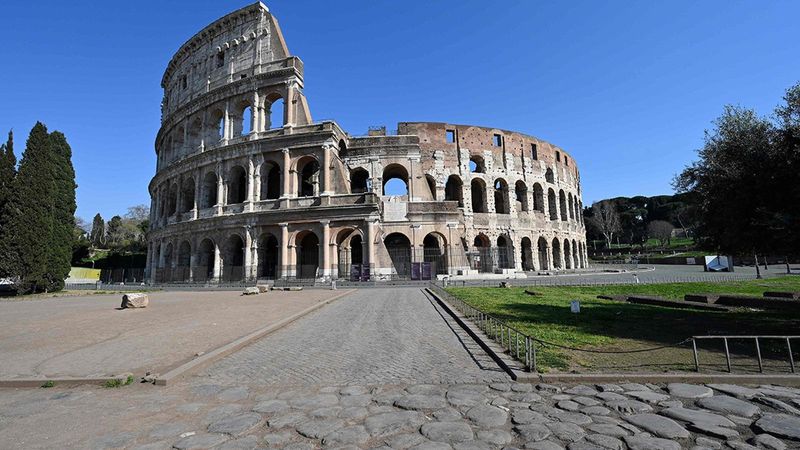
The eternal allure of Rome, with its layers of history, draws countless tourists to its ancient streets.
The Colosseum stands as a testament to Rome’s grandeur, but the queues and crowds often overshadow its majesty. This influx poses challenges in preserving its historical sites and the city’s vibrancy.
Strategies to disperse tourists across the city are in place, encouraging exploration beyond the well-trodden paths. Rome’s approach underscores the need to cherish and protect its heritage amid growing visitor numbers.
8. Prague, Czech Republic
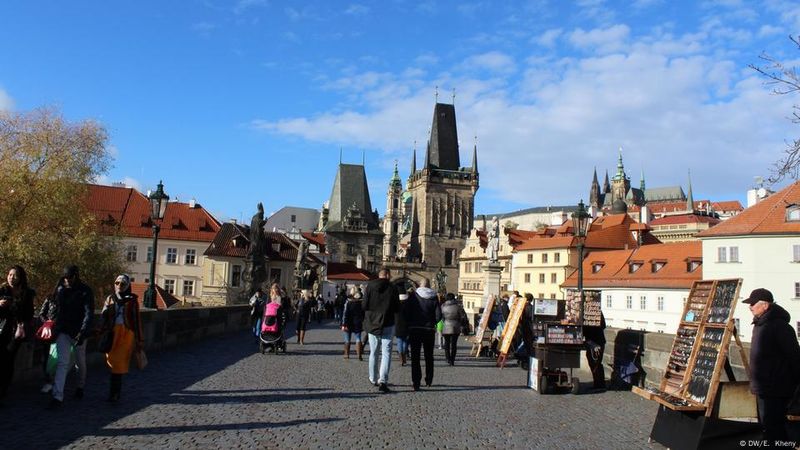
Prague, with its fairy-tale architecture, enchants visitors from around the globe. Yet, the iconic Charles Bridge often feels more like a bustling market than a serene crossing.
This surge in visitors challenges the city’s infrastructure and impacts local life. Efforts to promote alternative attractions and seasons are in place, aiming to alleviate congestion.
Prague’s journey in managing tourism reflects the delicate balance required to maintain its charm while accommodating eager travelers.
9. Florence, Italy
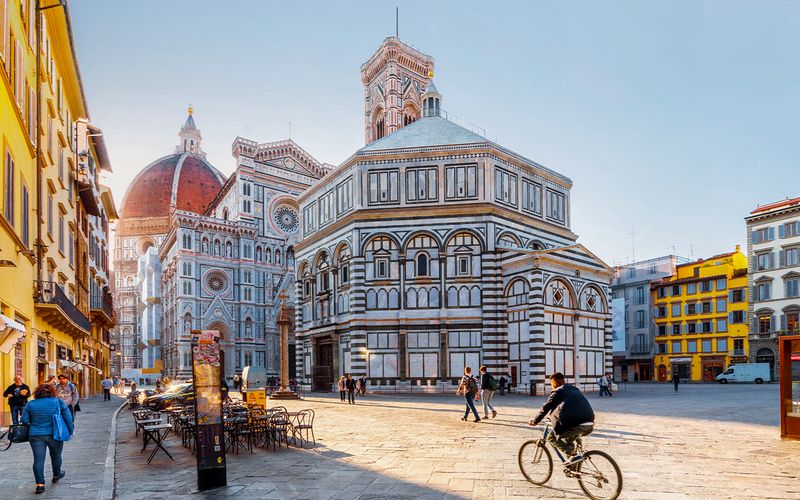
Florence, the cradle of the Renaissance, attracts art lovers and history enthusiasts alike. The Piazza del Duomo, a hub of activity, is often packed with visitors keen to marvel at its architectural splendor.
The high volume of tourists places a strain on the city’s resources and daily life. Measures to manage these numbers include timed entries and promoting lesser-known sites.
Florence’s challenge lies in preserving its rich cultural heritage while welcoming the world to its doorstep.
10. Edinburgh, Scotland

Edinburgh, with its historic charm and vibrant festivals, has become a magnet for tourists. The Royal Mile, especially during festival season, is a lively spectacle of performers and visitors.
This influx adds vibrancy to the city but also strains local life. Efforts to spread tourism throughout the year and city are underway, aiming to reduce the pressure during peak seasons.
Edinburgh’s strategy highlights the need for sustainable tourism that celebrates its culture without overwhelming it.
11. Palace of Versailles, France
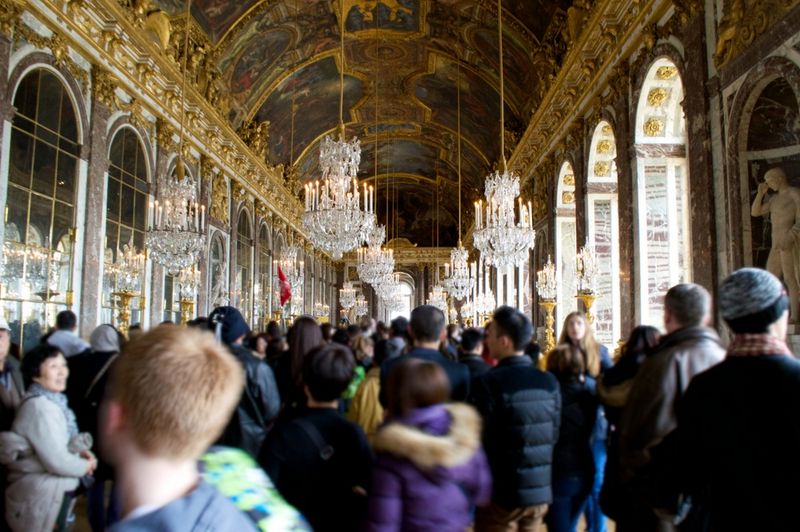
The grandeur of the Palace of Versailles is unmatched, yet it struggles under the weight of its popularity. Every year, millions swarm its opulent halls and manicured gardens, eager to relive France’s royal past. Early mornings offer a slightly quieter experience.
The Hall of Mirrors dazzles with its splendor, but the crowds can diminish its majesty. Weekdays in the off-season present the best chance for a more relaxed visit.
The local economy thrives, but the wear on the palace’s structure is evident. Balancing preservation and accessibility remains a challenge.
12. Mont Saint-Michel, France
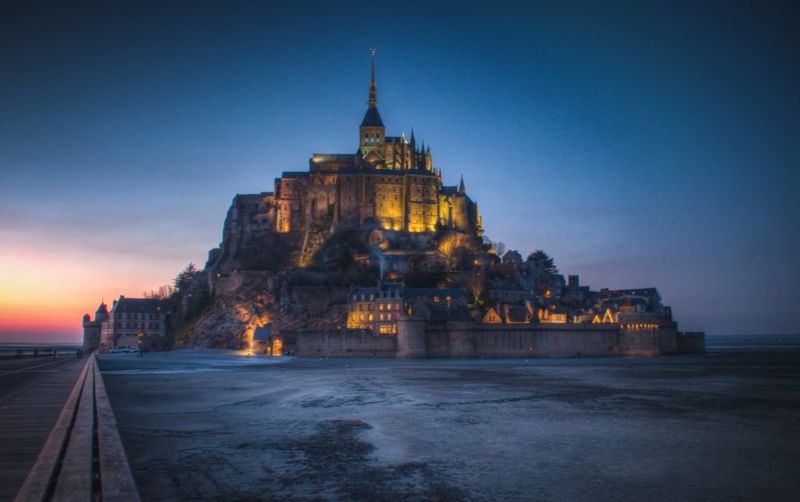
Rising dramatically from the sea, Mont Saint-Michel feels like a scene from a fairytale. Yet, its cobblestone streets are often packed with tourists. Off-peak times reveal a quieter, more mystical side.
The abbey atop offers breathtaking views but navigating through bustling crowds can be challenging. Visiting early morning or late evening helps avoid the throng.
Local shops thrive on tourism, yet the environmental impact remains a concern. Efforts to preserve its unique charm are increasingly vital. Discovering the quieter corners can unveil its true magic.
13. Cologne Cathedral, Germany
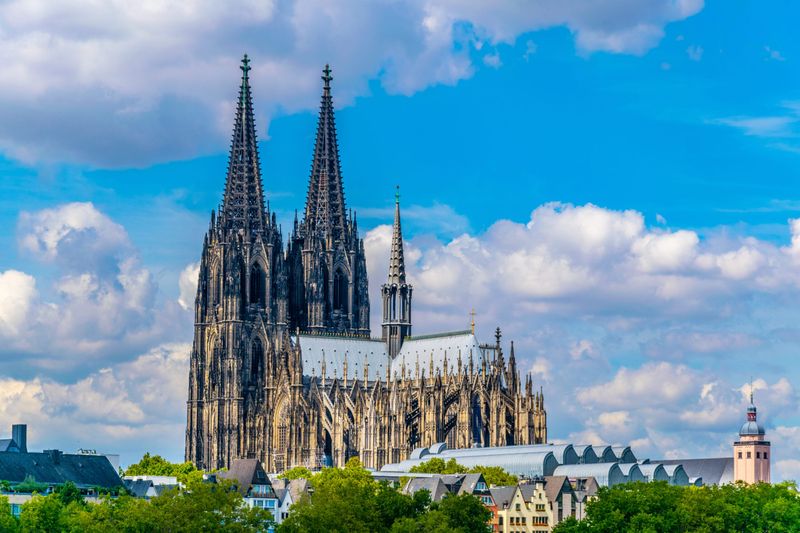
Cologne Cathedral, a masterpiece of Gothic architecture, draws millions annually. Its towering spires captivate from a distance, but the interior is often bustling with visitors. Early mornings or late afternoons offer a more serene experience.
The Cathedral’s history is as rich as its design, with each corner telling stories of the past. Despite the crowds, the awe it inspires is undeniable.
Local businesses benefit from tourist influx, yet maintaining the site’s integrity is crucial. Special events like Christmas markets add to the charm, yet amplify visitor numbers.
14. Acropolis of Athens, Greece
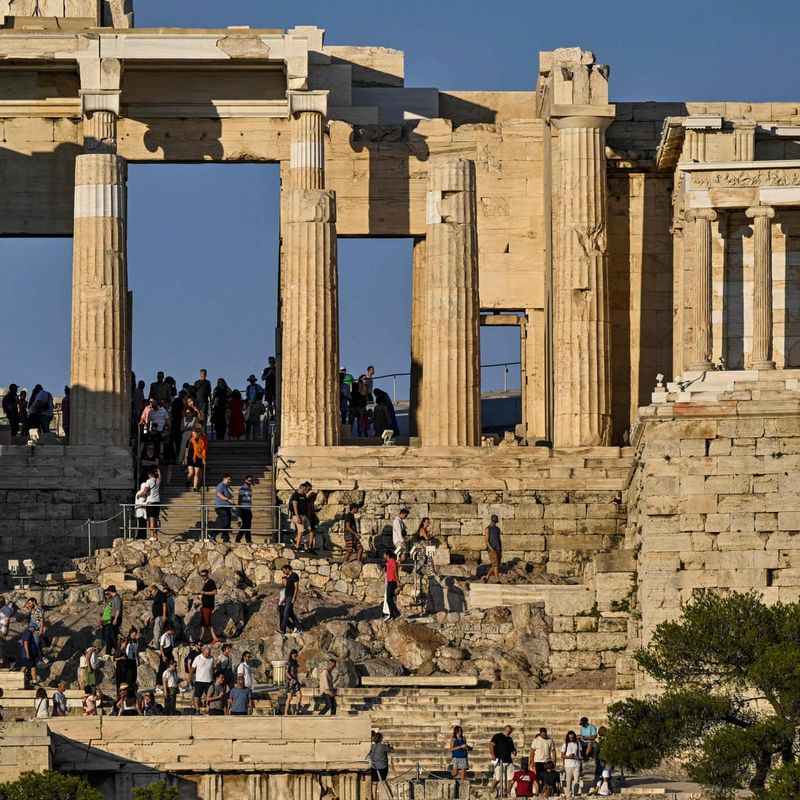
The Acropolis stands as a testament to ancient Greek ingenuity, attracting history enthusiasts worldwide. Despite its allure, the site is often teeming with visitors. Early mornings or late afternoons provide a more peaceful exploration.
While the Parthenon remains the star attraction, its beauty is best appreciated without the bustling crowds. Visiting during the shoulder seasons can enhance the experience.
The impact of tourism is evident in the site’s wear and tear, urging stronger preservation efforts. Its significance in human history makes it a must-see, albeit with mindful visitation.
15. Alhambra, Spain

Alhambra, an epitome of Moorish architecture, enchants tourists from around the globe. However, its intricate designs often get overshadowed by throngs of visitors. Early morning entries provide a glimpse of its tranquil beauty.
The Nasrid Palaces are a highlight, offering a peek into Spain’s rich past. However, planning ahead is essential as tickets sell out quickly.
The balance between tourism and conservation challenges authorities, with ongoing efforts to protect its historical integrity. The surrounding gardens offer a serene escape from the crowds, adding to Alhambra’s allure.
16. Stonehenge, England
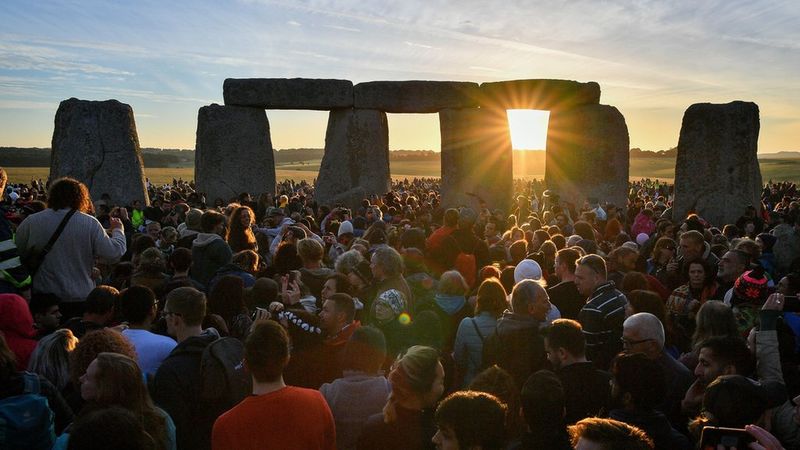
Stonehenge, shrouded in mystery, draws visitors eager to unearth its secrets. Yet, the site often feels more like a bustling hub than a mystical monument. Visiting during weekdays or in winter months offers a more intimate experience.
The encircling paths provide various perspectives, yet the sheer number of tourists can detract from its enigmatic appeal.
Efforts to manage visitor impact are ongoing, with emphasis on preserving its historical significance. Experiencing sunrise or sunset here can still evoke a sense of wonder, despite the crowds.
17. Cinque Terre, Italy
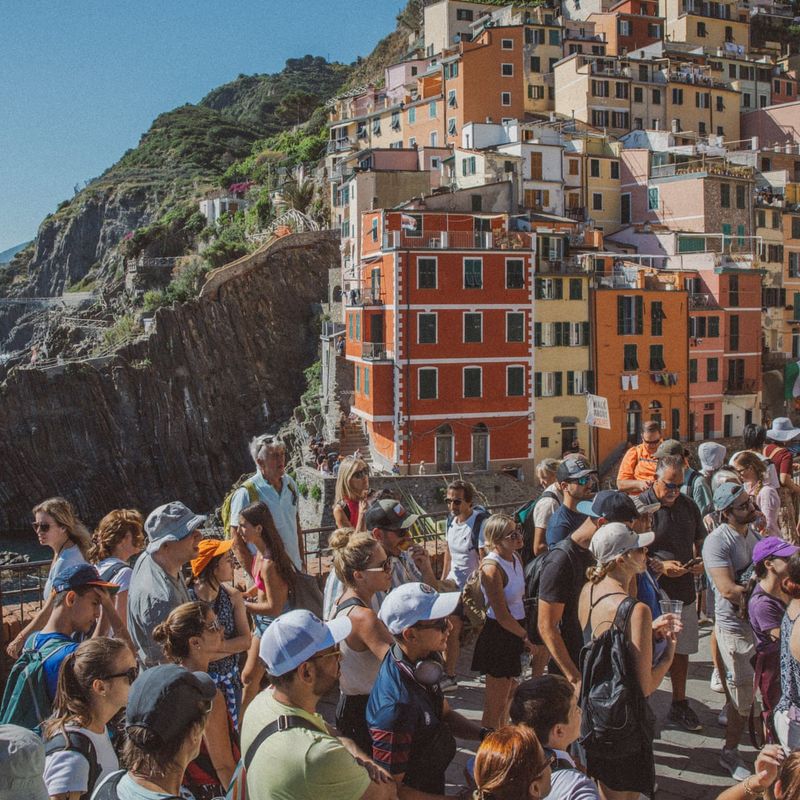
Cinque Terre, with its colorful cliffside villages, lures tourists seeking picturesque vistas. However, its narrow trails and streets are often congested with visitors. Exploring early morning or late evening reveals its quieter charm.
The hiking paths connect the villages, offering stunning views despite the crowds. Off-peak seasons provide a more relaxed adventure.
Tourism boosts the local economy but puts strain on infrastructure and natural resources. Sustainable tourism practices are increasingly crucial to preserve its unique landscape. Discovering less-traveled paths can offer unexpected delights.
18. Eiffel Tower, France
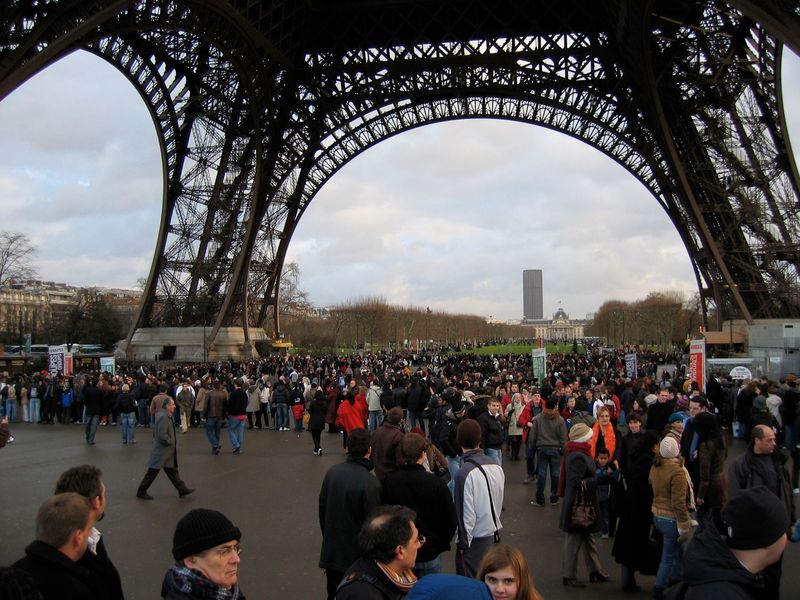
The Eiffel Tower stands as Paris’s iconic landmark, drawing tourists from every corner. Despite its size, the area often feels overwhelmingly crowded. Visiting during early hours or weekdays helps in evading the busiest times.
The panoramic views from the top are breathtaking, yet the wait can be lengthy. Advanced booking of tickets eases the experience.
Local businesses thrive, but managing the environmental footprint remains a priority. Nighttime visits reveal a different allure, with the tower illuminated against the Parisian sky.
19. Neuschwanstein Castle, Germany

Neuschwanstein Castle, a fairytale vision, captivates visitors with its enchanting architecture. However, its popularity leads to crowded tours and packed viewing points. Early morning visits offer a peaceful glimpse into its grandeur.
The castle’s design inspired Disney’s Sleeping Beauty Castle, adding to its allure. Despite the crowds, its charm remains intact.
Tourism is vital for the local economy, yet preservation efforts are critical due to the site’s delicate structure. The nearby Marienbrücke provides stunning views, though often bustling with photo enthusiasts.
20. Hallstatt, Austria
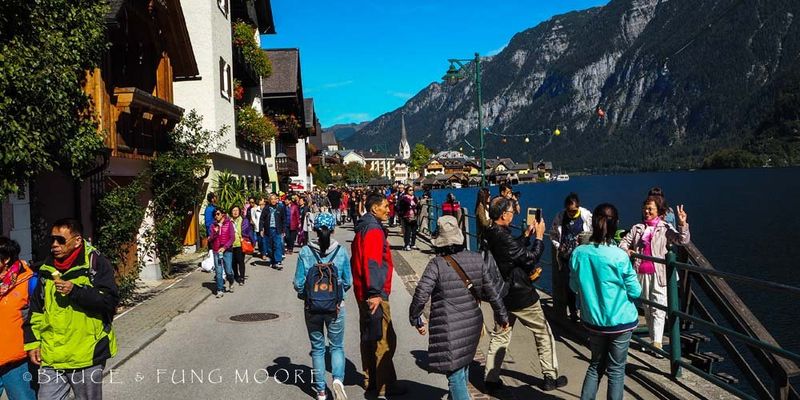
Hallstatt, nestled by a serene lake, offers postcard-perfect views. Yet, its streets and viewpoints are often filled with tourists seeking that perfect shot. Early mornings or late evenings provide a chance to experience its tranquil beauty.
The village’s charm lies in its traditional architecture and stunning natural backdrop. However, the influx of tourists challenges its infrastructure.
Efforts to promote sustainable tourism are underway, balancing visitor enthusiasm with preservation needs. The quieter trails and paths reveal Hallstatt’s hidden magic, offering more than just a photo opportunity.

